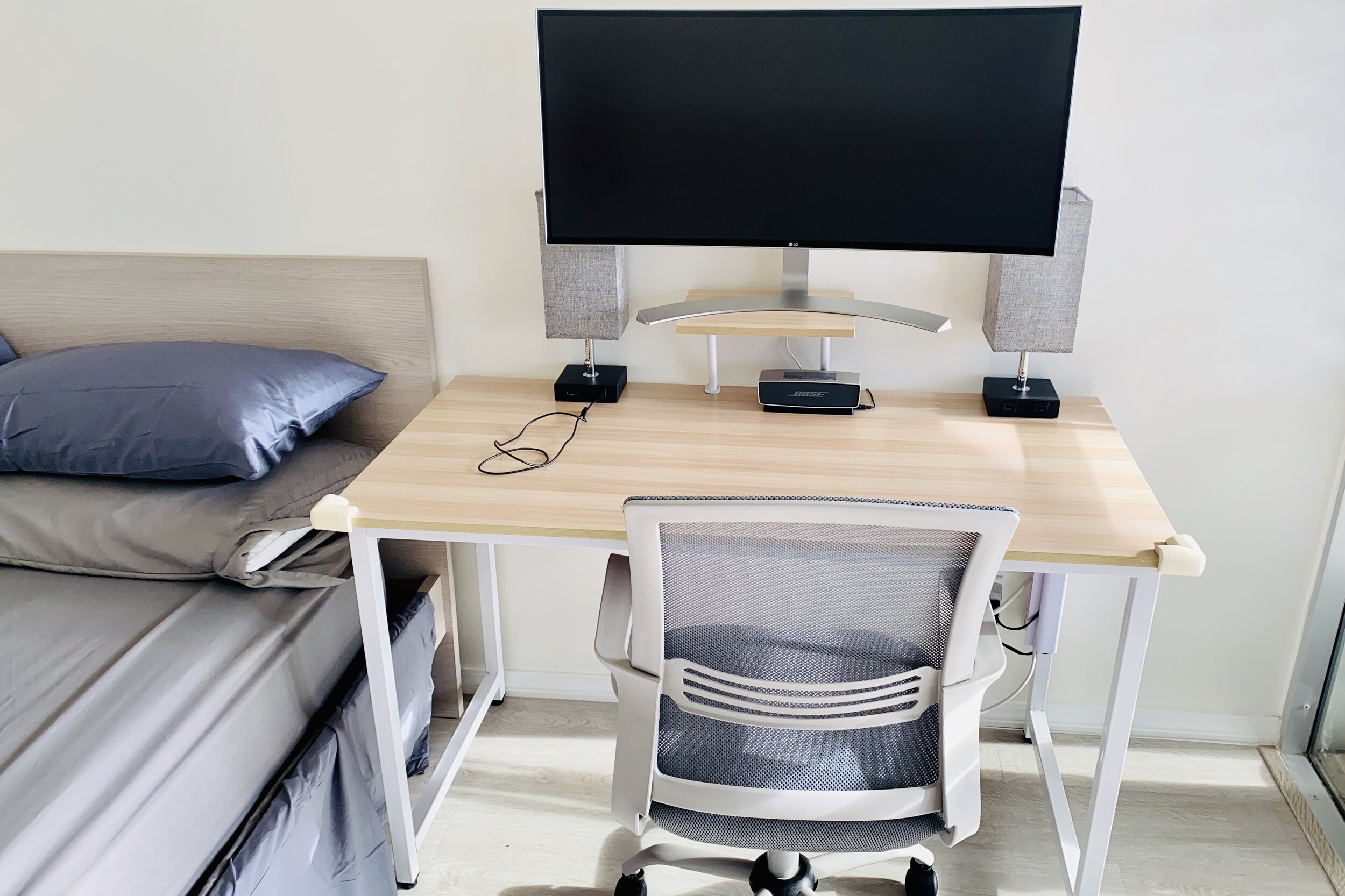On January 27, AAPL will report its earnings for its fiscal Q1 (September 26, 2021 through December 25, 2021). Analysts have been steadily raising their expectations based on a number of factors - most of them related to a more normalized supply chain. As noted on its FQ4-2021 earnings call, the company indicated that supply constraints resulted in a $6 billion (with a “b”) shortfall to revenue in the September quarter AND that it anticipated an even larger shortfall in the holiday quarter due to ongoing supply chain issues.
The analysts have clearly factored that in and are anticipating very meager (by AAPL’s standards) results with expected YOY growth of 8% and net income of 13% for revenue and net income, respectively.
Dec-2020 actual vs. Dec-2021 expected revenue and EPS.
A Recent Historical Look - AAPL’s Reported Revenue and Net Income during the COVID Period:
History is not an predictor of the future, but AAPL has grown top-line by an average of 22% during the COVID period (which I define as the fiscal quarters March-2020 through September-2021) and net income by 42.4%. If you isolate the past twelve months (the four quarters beginning Dec-2020 through September-2021) the growth is even more insane with average top-line growth of 35% and average net income growth of 74%.
Why is Net Income growing twice the pace of Revenue? I can’t do a full bridge but here are some reasons why…
Highest revenue product segments in FY21 have gross margins above the corporate average: In FY21, both the iPhone ($192 billion / +39% YOY) and Services ($68.4 billion / +27%), made up about 71% of total net sales. Those two product segments have margins that exceed the corporate average of 42%. AAPL’s Services category runs at a margin of anywhere between 70 - 75% (it was 70.5% in the Sept-2021 quarter). So when you talk about those types of margins on nearly 20% of your total net revenue, it’s going to disproportionately grow your profits.
Leverage on the higher revenue base: With revenue growing 35% in 2021, AAPL achieves margin leverage on that growth. Said differently, AAPL has roughly $44 billion of SG&A and R&D expense that does not scale with revenue growth like COGS does. There may be some components, but for the most part those expenses do not.
Operational efficiencies: Cook is known as an operational genius - during his time in the COO role before succeeding Steve Jobs, he basically built the most impressive, agile, and profitable supply chain in the world to turn brilliant ideas into pots of gold. And his predecessor in that role (and rumored future AAPL CEO), Jeff Williams, is known to be just as good. AAPL is notorious for squeezing every last penny out of suppliers based on the volumes of components they buy and the operating model of bringing products to market (i.e. AAPL’s contract manufacturers or 3rd party resellers (retail channel) typically takes on the burdens of inventory carry. If you don’t believe me, AAPL reported an inventory balance of just $6.6 billion as of Sept-25-2021, which is 1.9% of total assets and 1.8% of net revenue. AAPL has also achieved margin efficiencies with its Apple Silicon (which now powers every new iPhone, iPad, and Mac). SSD prices continue to fall and while DRAM has not seen the same fall in pricing, AAPL is able to offset this by passing on that cost to customers in DRAM-heavy products like MacBooks and iMacs.
I get it - AAPL clearly stated that it saw headwinds on the supply front in the holiday quarter, but 8% top line growth seems very very conservative. Additionally, while AAPL’s management commentary came about a month into the holiday quarter, there are numerous reports that the supply chain issues started to loosen up on the back half with the company’s most important product, the iPhone 13, achieved supply-demand balance for the lower-end models and backlog on the pro models (iPhone 13 Pro Max and iPhone 13 Pro) had significantly improved.
Additionally, customers continue to opt for the higher end models (Pro and Pro Max), which will only drive ASPs higher even on modest or no unit growth. But, it is worth looking some of the factors that may also be playing in here.
Timing of iPhone launch: AAPL didn’t launch the iPhone 12 models until October 23, 2020 and the Pro Max (highest priced models) did not launch until November, while this year’s iPhone 13 entire lineup launched in AAPL’s biggest markets on September 24, 2021. Since the quarter ended a day later (September 25), most of that revenue gets pushed into the holiday quarter regardless. This is going to be more of an issue for the March-2022 quarter though as you’ll have disproportionate sell-in skewed to the holiday quarter.
AAPL Watch and AirPods did not see significant upgrades: While the Wearables and Accessories categories is not AAPL’s biggest revenue stream, it was still $38.4 billion in FY21, of which I would guess most of that revenue is now coming from the Watch and AirPods. Given the fact that neither product saw a ‘must have’ upgrade in the holiday quarter, I would expect this category to have very little growth.
Apple Silicon Macs (Air vs. Pro): Last year, AAPL launched its first Apple Silicon (M1) in the holiday quarter with the new MacBook Air and Mac Mini. This year, they launched the new 14” and 16” MacBook Pro’s. From a revenue perspective, this also may be a ‘push’. The MacBook Pro’s were highly anticipated, but are also very expensive - entry-level 14” starts at $1,999. These were significantly supply constrained throughout the quarter whereas the MacBook Air that was launched last holiday quarter was not. So I would not be surprised to see very modest growth in the Mac category (driven mainly by ASP).
iPad Air 4 v. iPad Mini 6: Last year, AAPL made a significant update to the iPad Mini 4 - giving it the feel of the iPad Pro with nearly the same form factor - it also became compatible with the Apple Pencil 2 and the Magic Keyboard. The reviews on the iPad 4 were, and continue to be, quite good. This year, AAPL launched a refreshed Mini (6th gen) during the holiday quarter. The Mini 6 had mixed reviews due to the ‘jelly scrolling issue’ and I just think it’s a weird product that converges with the iPhone Pro Max. That is anecdotal, but I would not be surprised if it didn’t achieve great volume.
The Bottom Line:
SUPPLY SUPPLY SUPPLY: The question that will make or break this quarter is going to be about supply. That $6B of lost sales (I view it more as deferred) due to supply issues in the September quarter can only be a tailwind for the holiday quarter….but not if AAPL saw more supply constraints. It would merely be trading for supply constraints for supply constraints. AAPL acknowledged on its Q4 earnings call that iPhone channel inventory was below target levels, while demand was actually stronger for the 13 than the 12. The ability for AAPL to catch up on iPhone supply, which would include channel fill (recognized on a sell-in basis) will really dictate if that 8% growth is analysts’ not doing their homework, inability to interpret the actual state of the supply chain, or both…










































